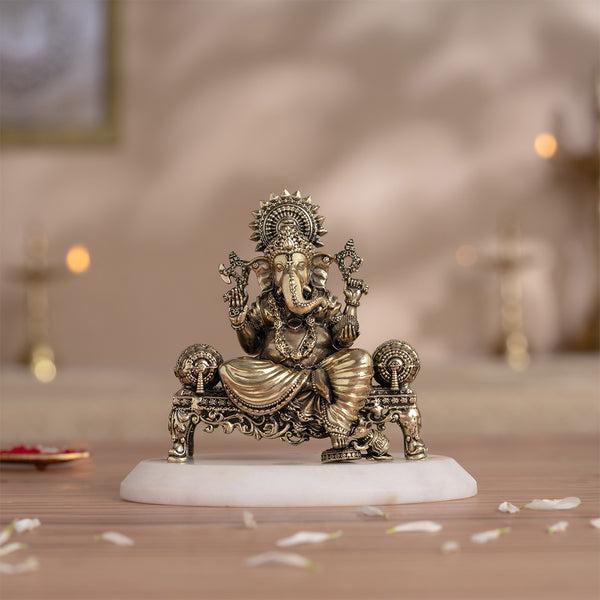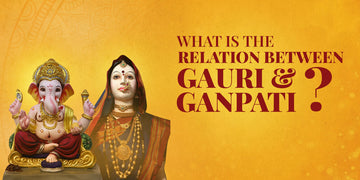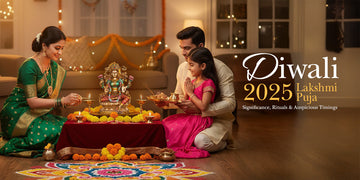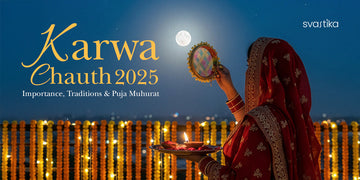Mythology has fascinated humans for centuries and will continue to do so long after.
As humans who still occasionally gaze at the stars respectfully, it should be no surprise that the tales of Gods and Goddesses battling good and evil should captivate us.
The concepts of hell and heaven, right and wrong, morals, and how even the Gods are susceptible to mistakes sometimes render us human.
What could be more humbling than knowing that a God, the creator of the universe himself, could stumble off his pedestal?
And to be born a Hindu opens up hundreds of thousands of different dieties many of whose idols are found in home such as Lord Shiva, Lord Ganesha, Goddess Lakshmi, Lord Krishna, Lord Hanuman, Goddess Durga, Mata Saraswati etc. who played a hand in our creation.
It is a link to us, tethering us to this universe, a story told over generations of our ancestors, carefully wrapped and passed down. And with the abundance of deities presented to us, we have a lifetime's worth of stories to read and learn from.
There is no shortage of figures of the Almighty in the Indian subcontinent. Our strength comes from our diversity.
We have hundreds of traditional gods and goddesses with our large Hindu population. There are numerous rites and legends associated with this elephant-faced God.
Lord Ganesha and Goddess Gauri are well-known deities who are beloved by all. No occasion begins without calling forth the blessings of these two gods.
And if you grew up in an Indian household, you should hold fond memories of Diwali and Ganesh Chathurthi being celebrated with extravagance and energy.
Relation Between Ganpati and Gauri

Lord Ganapathi is Goddess Gauri's brother. Since both, the Gods go by a plethora of different names, with Lord Ganpathi being called Ganesha, Dukh Harta, Sukh Karta, Vighneswara, Bappa, Pillayar, Vinayaka, Mahodara, and Lambodara, and Goddess Gauri is known as Lalita, Uma, Parvati, Kali, Durga, Haimavati, Abirami, etc., the relationship is often gone ignorant. Now, moving on to their story.
Lord Ganesha is said to have been made out of sandals by Goddess Parvati and took the form of a little boy at first.
Because of Goddess Parvati's spouse, Lord Shiva's importance, it is believed that the devas of heaven frequently sought his advice. As a result, their home was always bustling with visitors.
While she bathed, Nandi, Shiva's trusty companion, had been assigned to watch Goddess Parvati abode.
Nandi, on the other hand, had welcomed Lord Shiva. Slighted by Nandi's hesitation to carry out her command when faced with Lord Shiva.
Goddess Parvati sculpted Lord Ganesha with her own two hands to defend the house's entrance and protect her.
While Goddess Parvati was bathing, the small boy was given strong orders not to let anyone into the apartments until the Goddess deemed it appropriate.
The little boy assigned to guard the door was given roles and responsibilities and a weapon to prevent anyone from entering.
Several devas attempted to enter the home but were unsuccessful. Lord Shiva was eventually barred from entering his own home.
The Ultimate Destroyer lord shiva responded by focusing his army on the young boy, but no one could destroy Goddess Parvati's creation.
Lord Shiva is reportedly sliced off Lord Ganesha's head, enraged by the little boy's boldness in refusing to let him in. Goddess Parvati was taken aback when she eventually arrived at the crime scene.
She is claimed to have turned to the devas and Lord Shiva, claiming the small child to be her son, to vent her rage and sadness.
In her fury, Parvati took the fearsome form of Durga, fierce goddess with multiple arms. It was in this manifestation with numerous limbs that the Mother Goddess pledged to destroy all creation, such was the depth of her wrath.
The gods were shocked and regretful, setting out to resurrect the young boy.
The devas were required to return with the head of the first creature they saw facing north, which happened to be an elephant.
Lord Shiva replaced the elephant head with the boy's body, resulting in the creation of Lord Ganpathi, as we all know. The relevance of India's culture and heritage has always been emphasized.

Brass Ganesh Idol Virajman On Sinhasan (4 Inch)
₹4,699.00
₹5,499.00

Brass Ganesh Idol Virajman On Sinhasan (4 Inch)
The Significance of Gowri Ganesha Festival

In Karnataka, Gowri Habba is a Hindu celebration held a day before Ganesh Chaturthi. The Goddess Gowri or Gauri, more commonly known as Parvati, is honored as Ganesha's mother at this festival.
It is a prominent event in Karnataka that married ladies mostly commemorate. A tradition that is followed dutifully by the women in our country, the Gowri Pooja is a revered ritual that has thousand partaking in it every year.
This festival is celebrated throughout the North Indian states of Jharkhand, Rajasthan, Uttar Pradesh, Bihar, Maharashtra, Chhattisgarh, and Madhya Pradesh, alternatively termed Hartalika.
Gowri, Ganesha's mother and Shiva's wife, is revered across India for her capacity to bestow courage and might to her believers. Of course, she is. Considered to be one of the fiercest women gods in the whole of Hindu mythology, Goddess Gowri wields no small amount of power in her control.
Facts about Gowri Puja

After bathing, married women usually wear new clothes and then dress up the girls in the family in a similar way.
The women then make the 'sthapana' of either jalagauri or arishinadagauri, which is essentially supposed to be a symbolic turmeric idol of the Goddess.
The local market sells painted and decorated clay idols of Gowri. The Goddess's idol is set on a plate with a grain of rice or wheat.
Because this puja or ceremony requires suchi, that is, cleanliness and shraddha, dedication, the women go to temples or some other person's household, in which it is performed as per specified procedures, or they can perform the rite in their own houses.
Around the idol is built a mandapa, which is usually ornamented with banana stems and mango leaves. Garlands and cotton ornaments adorn the Gowri, and ladies wear a 'gauridaara' (holy strand with sixteen knots) wrapped to their right wrists as a blessing from Gauri and as part of the vratha.
During the fulfillment of the religious activity, every one of the sixteen knots is honored with mantras.
A revered tradition of the Hindu religion, the Ganpathi-Gowri puja has been conducted faithfully for centuries. The mother and son of deities form some of the prominent Hindu deities.
Conclusion
I hope this post cleared all your doubts regarding Relation between Ganpati and Gauri and helped you to understand significance of Guari Ganpati puja.








